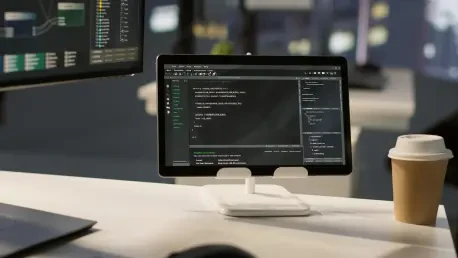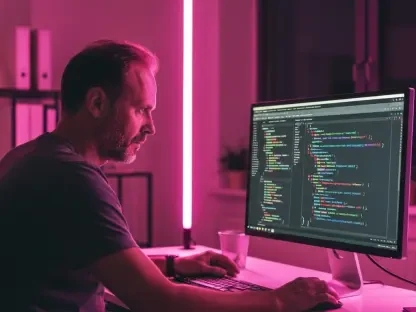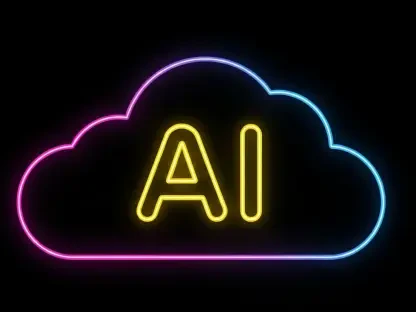Overview of the Coding Landscape
In an era where software development drives innovation across industries, a staggering challenge looms large: millions of aspiring developers find themselves barred by the complexity of traditional text-based coding, creating a significant gap that limits access to tech careers and slows the pace of digital transformation. As the demand for skilled programmers continues to outstrip supply, the industry stands at a critical juncture, seeking tools that can democratize coding and make it accessible to a broader audience.
The programming landscape today is marked by rapid evolution, with an emphasis on efficiency and inclusivity. Companies and educational institutions are increasingly prioritizing solutions that simplify the development process while maintaining the power needed for complex applications. Amid this shift, visual programming has emerged as a promising avenue, offering a more intuitive approach compared to conventional methods.
This report delves into the potential of visual programming to reshape the industry, with a specific focus on Pipe, a groundbreaking language introduced by TopLineSoft Systems. By examining its features, challenges, and alignment with current trends, the analysis aims to uncover whether this tool can truly transform how coding is learned and practiced.
Understanding Visual Programming and Pipe’s Emergence
Visual programming represents a paradigm shift, replacing lines of text with graphical elements like blocks and diagrams to represent code logic. Unlike traditional coding, which relies heavily on syntax mastery, this approach allows users to manipulate visual components, making it easier to grasp complex concepts without deep technical knowledge. This method has gained traction as a way to lower entry barriers for beginners and streamline workflows for seasoned developers.
Pipe, developed by TopLineSoft Systems based in Surrey, BC, stands out as a pioneering force in this domain. Launched as a general-purpose visual programming language, it promises to rival the capabilities of text-based systems while offering an intuitive interface. Its introduction marks a significant milestone, positioning it as a potential disruptor in a field hungry for accessible yet powerful tools.
The programming industry currently faces mounting pressure to address skill shortages and accelerate development cycles. With a growing emphasis on user-friendly solutions, key players like Scratch and Blockly have laid the groundwork for visual tools, but Pipe aims to push boundaries further. This shift toward accessibility reflects a broader technological trend, where simplifying complex processes is becoming a priority for fostering innovation.
The Unique Strengths of Pipe in Modern Coding
Innovative Features and Capabilities
Pipe distinguishes itself with a robust framework that mirrors the flexibility and strength of traditional text-based languages. Unlike earlier visual tools that often lacked depth, this language supports intricate programming tasks through a well-designed system of graphical elements. Its ability to handle sophisticated projects positions it as a serious contender for professional use.
One of Pipe’s standout features is its seamless integration with artificial intelligence. Developers can encapsulate AI-generated code within visual blocks, creating reusable and intuitive workflows that enhance productivity. This capability not only simplifies coding but also leverages cutting-edge technology to automate repetitive tasks, setting a new standard for efficiency.
Drawing from comprehensive specifications, Pipe is regarded as the most advanced visual programming tool available. Its detailed design ensures that users can tackle a wide range of applications, from simple scripts to complex systems. This level of sophistication underscores its potential to redefine development practices across various sectors.
Impact on Accessibility and Efficiency
The steep learning curve of traditional coding remains a formidable obstacle for many aspiring developers, often discouraging them from pursuing tech careers. Pipe addresses this challenge head-on by offering a visual interface that simplifies the understanding of programming logic. By reducing the need for syntax memorization, it opens doors for individuals who might otherwise be excluded from the field.
Evidence suggests that text-based coding can be a significant barrier, with many beginners struggling to debug errors or grasp abstract concepts. Visual tools like Pipe bridge this gap by providing a tangible representation of code, making it easier to identify issues and experiment with solutions. This approach has the potential to accelerate learning and build confidence among new programmers.
Looking ahead, features such as AI-generated visual diagrams could further enhance Pipe’s impact. By automatically translating complex logic into clear, graphical formats, these advancements promise to boost comprehension and streamline development processes. Such innovations hint at a future where productivity in coding reaches unprecedented levels.
Challenges in Adopting Visual Programming Tools Like Pipe
Historically, visual programming languages have faced criticism for their lack of flexibility and scalability, often falling short in handling large-scale projects compared to text-based counterparts. Pipe seeks to overcome these limitations with a design that supports extensive customization and robust performance. Yet, proving its efficacy across diverse applications remains a critical test for widespread acceptance.
Resistance from developers accustomed to traditional methods poses another hurdle. Many professionals view visual tools with skepticism, questioning their ability to match the precision and control of text-based coding. Overcoming this mindset will require demonstrating Pipe’s capabilities through real-world success stories and comprehensive training programs.
Technological and educational barriers also complicate adoption. Not all systems or curricula are equipped to integrate visual programming tools, and transitioning to a new paradigm demands significant investment in infrastructure and skill development. Addressing these challenges necessitates strategic partnerships and targeted initiatives to ensure users can fully embrace Pipe’s potential.
The Role of Industry Trends and Inclusivity in Pipe’s Development
The tech industry is increasingly prioritizing inclusivity, striving to democratize coding skills and make technology accessible to diverse populations. This trend aligns with a growing recognition that not everyone learns or works in the same way, prompting a demand for tools that cater to varied needs and backgrounds. Visual programming fits squarely into this movement, offering an alternative path to mastering development.
Oleg Kabanov, CEO of TopLineSoft Systems, has emphasized the urgent need for user-friendly alternatives to conventional programming. His vision highlights how tools like Pipe can empower individuals who struggle with traditional approaches, thereby expanding the talent pool in tech. Such perspectives resonate with broader efforts to create an inclusive digital ecosystem.
Pipe’s development reflects evolving industry standards, focusing on solutions that balance simplicity with power. By catering to users across skill levels, from novices to experts, it supports the push for tools that adapt to individual learning paces. This alignment with current priorities positions Pipe as a relevant and timely innovation in software development.
Future Prospects of Pipe and Visual Programming
Speculation on Pipe’s trajectory suggests a future rich with enhancements, particularly in AI-driven features. The potential for automated visual diagrams to simplify complex logic could transform how developers approach problem-solving, making abstract ideas more tangible. Such advancements might set a new benchmark for clarity and efficiency in coding tools.
Beyond technical upgrades, Pipe could disrupt the coding landscape by reshaping educational approaches and industry practices. Integrating visual programming into academic curricula or professional training programs may redefine skill acquisition, preparing a new generation of developers for modern challenges. This shift could accelerate innovation on a global scale.
Factors such as ongoing innovation, deeper AI integration, and rising demand for accessible tools will likely shape Pipe’s growth. As organizations and individuals seek efficient ways to build software, the language’s ability to adapt and scale will be crucial. Its influence may extend beyond individual projects, potentially redefining standards for collaboration and creativity in development.
Reflecting on Pipe’s Potential
Looking back, the exploration of Pipe revealed a transformative tool that blends accessibility with sophisticated functionality. Its capacity to rival traditional coding methods while lowering entry barriers stands out as a defining strength. The analysis underscored how visual programming could address long-standing challenges in the tech field.
As a next step, stakeholders should focus on fostering adoption through pilot programs and partnerships that showcase Pipe’s real-world impact. Investing in educational resources to train users on its features will be essential for building a supportive community. These efforts could pave the way for broader acceptance and integration.
Additionally, continuous refinement of AI capabilities and user feedback mechanisms should guide Pipe’s evolution. Encouraging collaboration between developers and educators to tailor the tool for diverse needs will ensure it remains relevant. By taking these proactive measures, the industry can harness Pipe’s potential to create a more inclusive and efficient future for coding.









